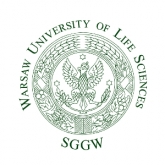Requirements
Bachelor degree or comparable in forestry, biology, agriculture, landscape planning or related natural sciences. Confirmed command of English. List of acceptable documents: http://www.sggw.pl/image/data/SGGW/teksty_pdf/WULS-SGGW_ENGLISH.pdf
Recruitment: Enrollment of Polish students is organized by WULS-SGGW in Poland. German and foreign candidates are recruited by USDE in Germany. Applications of foreign candidates are processed by UNI-ASSIST. Number of places available: 25. Tuition fee: according to the agreement - no tuition fee. Registration fee (non-refundable) - see local regulations at WULS-SGGW and USDE.
Specialization: Forest Information Technology
Mission of the specialization (major)
International Master Study Programme Forest Information Technology (FIT) is a joint initiative of the Faculty of Forestry t Warsaw University of Life Sciences-SGGW (WULS-SGGW) in warsaw, Poland, and the Faculty of Forest and environmental og the University of Sustainable Development (USDE) in Eberswalde, Germany. This is a double-degree, joint curriculum programme taught in English that enables its participants to achieve the Master of Science degree from both partner universities. FIT is an interdysciplinary education offer with its main focus on environmental information technologies (IT), forest ecosystem research, forest management and landscape research.
Detailed programme of studies
a) First year: First semester is placed at the USDE and characterized by impartation of basic knowlegde of environmental information technologies. Second semester takes place at WULS-SGGW and focuses on the impartation of continuative knowlegde of environmental information technologies including specific silvicultural contents.
b) Second year: During the third seemster an independent reserach project is planned at WULS-SGGW, USDE or other partner institution in Germany, Poland or abroad, accompanied with a range of elective courses. Fourth semester is devoted mostly to Master thesis preparation.
Educational outcomes
Students will be enabled to detect relevant IT application areas and to plan and to technologically promote corresponding innovation processes. Students learn to solve complex problems based on a deepened and extended understanding of structures, processes and relationships within ecosystems, landscapes as well as within the sphere of forestry and based on a broad spectrum of scientific methods and tools for the collection, analysis, storage, visualization and communication of environmental data.

